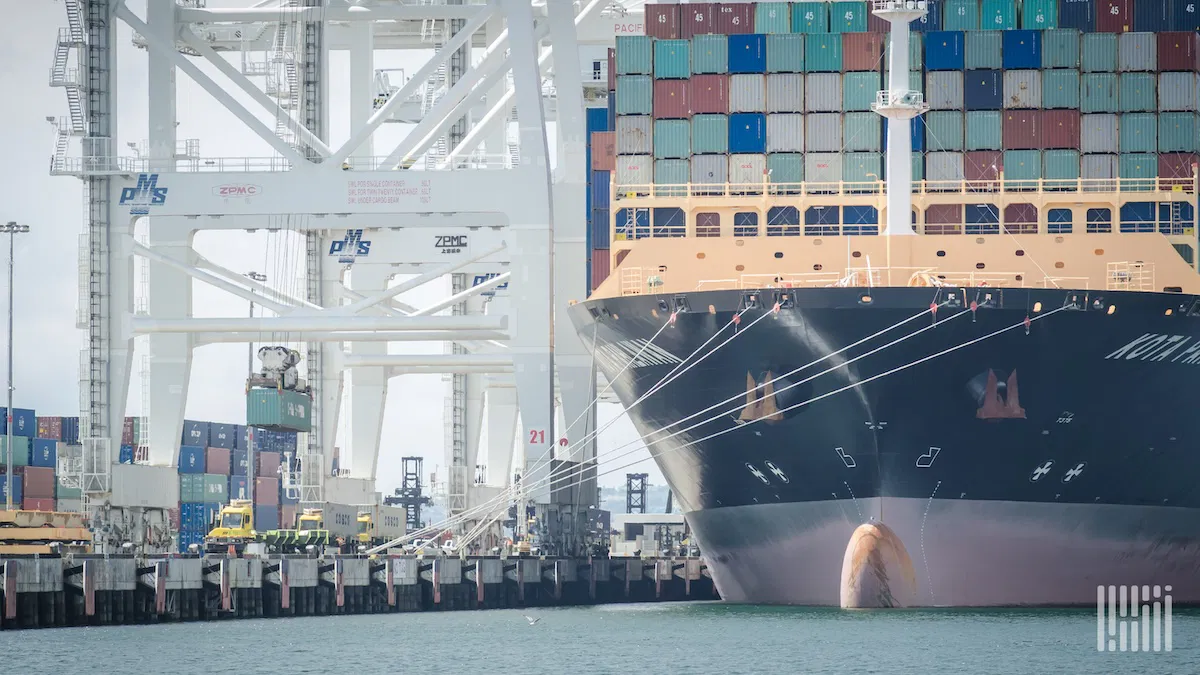Tariffs and Weak Demand: The Perfect Storm
Recent developments in the logistics sector indicate a downward trend in container rates on the Asia to U.S. trade routes, influenced significantly by various factors, particularly tariffs and weaker demand for imports. The current state has led many to question the implications this decline holds for both businesses and consumers alike.
Perspective cheie:
- Decreased import demand and ongoing trade tariffs are pushing container rates lower, consequently affecting consumer prices and freight costs.
- Even during the expected peak season, container rates from Asia to the U.S. West Coast and East Coast have taken a notable dip, while rates to Northern Europe have experienced a rise.
- In response to dwindling demand, shipping companies are proactively adjusting their capacity to stabilize prices.
- Global logistics firms are also on the lookout for potential trade routes, with significant investments being made in infrastructure in regions like Syria.
The Tariff Influence
Tariffs have re-emerged as a central factor impacting consumer prices and shipping costs. Analysts from Freightos noted that inflation in the United States rose by 2.7% recently, which can be traced back to the effects of these tariffs. Initially, many importers managed to soften this impact through frontloading strategies in light of global disruptions like the pandemic and ongoing trade tensions. However, these buffers are now dissipating, leaving importers more vulnerable than before.
Moreover, the European Union is gearing up to implement retaliatory tariffs on U.S. goods, potentially escalating these trade tensions even further, which could squeeze logistics costs through indirect means.
Cost Dynamics
The freight rate landscape illustrates a striking shift. For example, container rates from Asia to the U.S. West Coast have plummeted by 24%, now averaging around $2,369 per forty-foot equivalent unit (FEU). Similarly, rates to the U.S. East Coast have dipped by 5%, sitting at $4,888 per FEU. In contrast, while rates to Northern Europe have increased by 4% to $3,509 per FEU, Asia-Mediterranean prices decreased by 4% to $3,802 per FEU.
These reductions are indicative of the lower demand not sparing even the peak season for the shipping industry, underlining the complexity of today’s logistics environment.
Strategic Cuts in Capacity
The shipping industry is swift to adapt, as evidenced by carriers reducing trans-Pacific capacity by nearly 25%. This strategic maneuver aims to rebalance supply with the current demand, a necessity given the dual pressures of logistical hurdles and price instability. Such measures can have ripple effects throughout the supply chain, necessitating adjustments in logistics planning for affected stakeholders.
Investments in Trade Infrastructure
While the immediate economic landscape may seem troubled, strategic investments are being made in regions with emerging opportunities for new trade routes. A noteworthy example is Syria, where the United Arab Emirates’ DP World has entered into an $800 million partnership aimed at enhancing port facilities in Tartous. Such developments are in line with the efforts of global logistics players looking to flourish amid evolving market landscapes and unintended disruptions caused by fluctuating tariffs.
Looking Ahead: What This Means for Logistics
As the world of logistics constantly evolves, understanding the trends influencing container rates is crucial. The continuing decline in Asia-U.S. container rates represents both a challenge and an opportunity. Companies must adapt to these changes, possibly reevaluating their logistics strategies to remain competitive and cost-effective.
Rezumat
To condense, the long-term impacts of tariffs and decreasing demand are significant as they create a challenging environment for shipping and logistics. Companies must stay alert and adaptable, ensuring they remain competitive in these shifting landscapes. On platforms like GetTransport.com, users can efficiently manage their logistics needs while remaining cost-effective even amid rising challenges, from bulky goods transportation to international shipping solutions. Simplifying logistics effectively addresses diverse transportation demands, keeping the balance between efficiency and affordability.
In conclusion, while the trends in container rates present challenges, they also illuminate the potential for growth in logistics management. Even the best reviews and feedback can’t match the insight gained from personal experience. GetTransport.com empowers users to make informed decisions with competitive pricing for global cargo transportation. Benefit from the convenience and transparency the platform provides. Rezervă-ți cursa la GetTransport.com.

 Scăderea tarifelor pentru containere Asia-SUA: Ce determină această tendință?">
Scăderea tarifelor pentru containere Asia-SUA: Ce determină această tendință?">